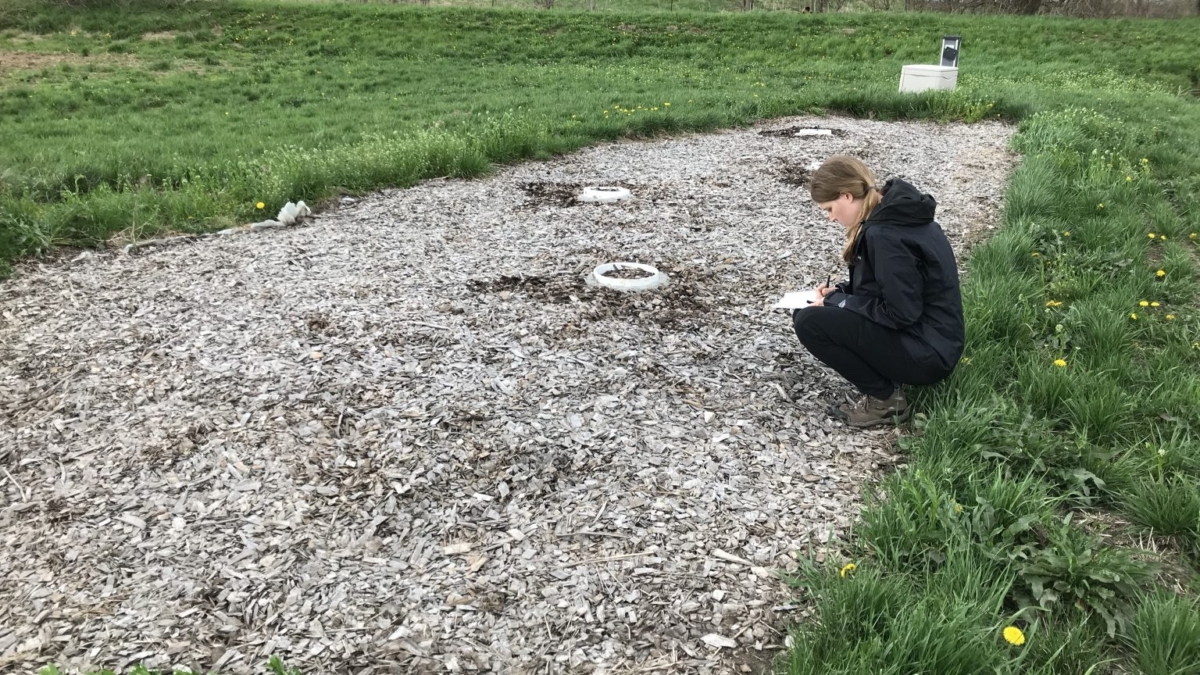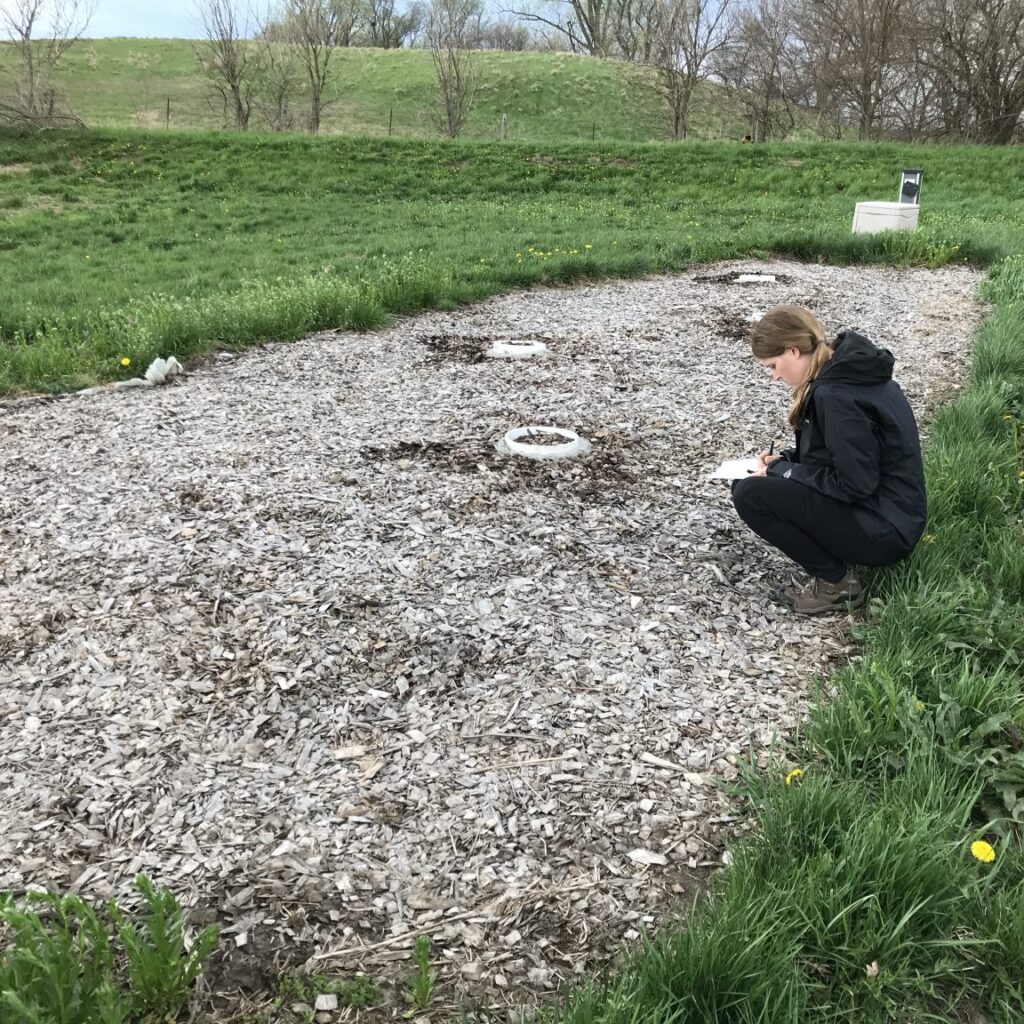DR. LAURA CHRISTIANSON, UNIVERSITY OF ILLINOIS
Project Impact
Denitrifying woodchip bioreactors promote biological removal of nitrate to prevent negative environmental consequences of nitrate loading to downstream waters. Bioreactor media should promote complete denitrification while maintaining high rates favorable for nitrate removal. Considering woodchip type, oak had the highest denitrification potential, which also corresponded to the most nitrate removal in lab
studies. While the oak type had a higher proportion as N 2 O, the overall proportion was low for all submerged woodchips (<14%), suggesting that woodchips generally have high potential for complete denitrification. Therefore, woodchip type could be an additional consideration for bioreactor design and construction, but this needs to be contextualized within practical factors such as woodchip availability and cost. In addition, field conditions that are known to influence performance and N 2 O proportions should be monitored over time to ensure bioreactors are reaching optimal performance. Without exposure to drainage water, fresh woodchips were capable of denitrification, albeit at a much lower rate than active or spent woodchips harvested from an operational bioreactor in the field. This demonstrated that denitrifying organisms are present in woodchip media prior to installation in bioreactors. Drainage water denitrification was not detectable by these methods, but it is still possible that microorganisms may also be sourced from tile water. Additional experiments are needed to further explore the source of denitrifying organisms in bioreactors.
Project Goals
1. Compare denitrification potential and N2O production potential between woodchip types and soil types.
2. Compare denitrification potential between tile drainage water, bioreactor-sourced woodchips, and fresh woodchips.


